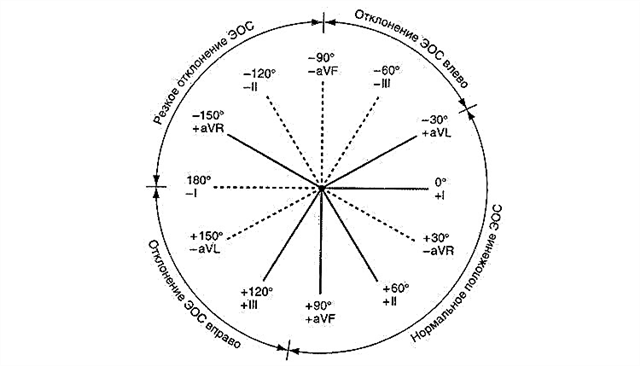 Which of them cause acne in the throat?
Which of them cause acne in the throat?
Their presence can be complained about by people who, before consulting a doctor, conducted an independent examination of the pharynx and tonsils, having found a suspicious rash on the surface of the mucous membrane.
A similar symptom is present in various forms of pharyngitis and tonsillitis, but other characteristic signs must be identified to clarify the diagnosis.
Causes
A change in the relief of the mucous membrane of the pharynx and tonsils, the appearance of tubercles on its surface is an alarming sign, which is usually accompanied by a sore throat of varying severity. Why do acne in the throat occur and what diseases do they indicate? Pimple-like lesions can be represented by:
- rash;
- inflamed follicles.
One way or another, a rash in the throat, which can be mistaken for acne, is a sign of an inflammatory process triggered by viruses or bacteria.
There are different reasons why you can find them during the examination:
- Acute pharyngitis.
- Follicular tonsillitis.
- Herpangina.
Pharyngitis is called inflammation within the boundaries of the pharynx, and sore throat, or tonsillitis, is inflammation of the tonsils. Most often, the palatine tonsils are affected, in which case they speak of a classic, or banal sore throat. One of its forms is called follicular, since the main symptom is the accumulation of pus in the follicles of the tonsils.
The nature of the inflammation affects the color of the pimples in the throat. For example, with a bacterial etiology of the disease, a purulent process occurs, and the formations in the throat acquire a whitish, yellowish tint.
This symptom is also confirmed by laboratory tests - if they are carried out. With a viral infection, the rash is usually red.
It is important to pay attention to the number of elements of the rash. If there is one tubercle or the number of pimples does not exceed 3-5 units, then we are most likely talking about a mild form of a viral infection, which is not accompanied by a pronounced deterioration in the general condition of the patient.
The type of pathogen, as well as the individual characteristics of the patient's body (in particular, the consistency of the immune system, the severity of immune reactivity) determine the course of the disease. At the same time, rashes resembling pimples are only part of the clinical picture, although an assessment of their appearance, number and area of localization can help in clarifying the diagnosis.
Acute pharyngitis
It occurs in patients of all age groups; the lymphoid tissue of the posterior pharyngeal wall is involved in the pathological process. The causative agents of acute pharyngitis are viruses of the respiratory group (adenoviruses, etc.), bacteria (streptococci, staphylococci).
Pimples on the back of the throat with pharyngitis look like millet grains; they have a bright red color, slightly raised above the surface of the edematous and reddened mucous membrane. In addition to pimples, you can see:
- redness and swelling of the lateral ridges;
- redness and swelling of the uvula.
If strep throat develops in an infant, it usually occurs in conjunction with inflammation of the nasal mucosa (rhinitis) as nasopharyngitis. At the same time, all the changes described above remain, and pimples in the throat are complemented by swelling and redness of the soft palate, on which pimples and other rash-like formations can also appear.
Follicular tonsillitis
Follicular tonsillitis is an acute infectious and inflammatory process. Of greatest importance in the development of this disease are various types of streptococci and staphylococci, the causes of occurrence are the entry of the pathogen into the body by airborne droplets or through autoinfection in the presence of a chronic focus of infection in the oropharynx.
The follicular form of angina is characterized by the presence on the palatine tonsils:
- edema;
- redness;
- pus-filled follicles.
The follicle looks like a white pimple in the throat; due to the presence of purulent exudate, it acquires a yellowish tint. In general, follicles can appear as rounded islets, millet grains, pimples or pimples.
 Experts compare the tonsils with follicular sore throat with the "starry sky", because festering follicles appear through the mucous membrane, which stand out against the background of redness and swelling.
Experts compare the tonsils with follicular sore throat with the "starry sky", because festering follicles appear through the mucous membrane, which stand out against the background of redness and swelling.
Acne in the pharynx with follicular angina gradually increases in size and can open up on its own. In this case, the patient's saliva will contain a slight admixture of pus. If follicular tonsillitis occurs in isolation, pathological changes are localized only within the boundaries of the palatine tonsils, but with tonsillopharyngitis, pimples also appear on the back of the pharynx.
It is important to know that the changes in the palatine tonsils do not always coincide - in some patients, when viewed from one side, signs of follicular tonsillitis are noticeable, and, on the other, catarrhal or lacunar.
Therefore, pimples can be located only on the right or left, combined with redness, loosening of the tonsils, the presence of yellowish and whitish plaques on their surface, inflammation of the posterior pharyngeal wall.
Herpangina
Herpangina is sometimes also called coxsackievirus sore throat, as it is caused by enteroviruses, Coxsackie viruses and ECHO. The elements of the rash, which the patient takes for pimples, are nodules, or papules, which are red and appear already from the first hours of the disease. They are localized:
- on the tonsils;
- on the palatine arches;
- on the tongue;
- on the soft palate.
Each such red pimple in the throat soon turns into a bubble, or vesicle. The color of the vesicles coincides with the color of the nodules, therefore, upon examination, red elements can be seen against the background of the hyperemic mucous membrane of the affected anatomical areas. At the same time, in some cases, the appearance of a rash is observed with the normal color of the underlying areas of the mucous membrane - then red bubbles and pimples stand out even more clearly.
Pimples with herpangine do not merge, but erosion can form in their place - defects of the mucous membrane, which often bleed, are painful. With herpangina, they heal without the formation of secondary changes.
Herpangina must be differentiated from herpetic stomatitis, the rash in which can also spread to the back of the pharynx, palatine tonsils. Herpetic stomatitis is caused by the herpes simplex virus. In this disease, grouped small vesicles filled with serous contents form on the mucous membrane. They have a yellowish tinge, they also spread to the skin around the lips and nose, where they usually soon become crusted.
If a patient complains of a sore throat and at the same time notices pimples on the mucous membrane, you need to consult a doctor - antibiotic therapy may be required. But even if antibiotics are not prescribed after a specialist examination, many other treatment options are used to quickly and effectively alleviate the patient's condition.



